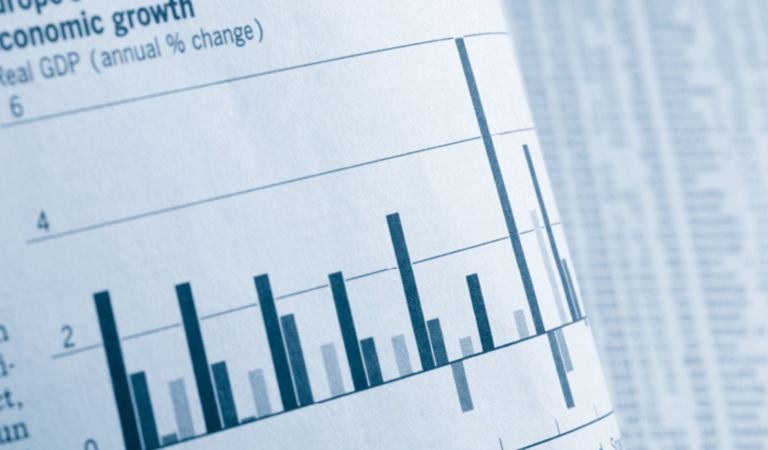Equities
Global equities (-2.7%) declined in April, ending the month with a 6.6% gain year to date. Higher-than-anticipated US inflation, along with the relative strength in the US economy, tempered market expectations for imminent rate cuts by the US Federal Reserve (Fed). The US dollar subsequently strengthened, and investor sentiment fluctuated as monetary policy forecasts and statements from Fed officials garnered greater scrutiny. Escalating price pressures in the US contrasted with decelerating inflation in the UK and the eurozone, potentially leading to a divergence in policy rates. The Fed signaled that interest rates could remain higher for longer, emphasizing its data reliance, while the European Central Bank (ECB) exhibited a willingness to implement rate cuts in the upcoming months. The J.P.Morgan Global Composite Purchasing Managers’ Index (PMI) fell in April, breaking a sequence of six consecutive monthly increases but remaining in expansionary territory. The severe conflict between Israel and Hamas heightened geopolitical tensions in neighboring countries and incited an Iranian attack on Israel. Currency weakness in Japan captured headlines as the yen breached new 30-year lows against the US dollar after the Bank of Japan (BOJ) left interest rates unchanged. In China, equities rebounded on the back of increased government support, improved market momentum, and discounted valuations relative to many global markets.
US
US equities (-4.1%) registered their first monthly decline in six months as solid economic growth, a robust labor market, and higher-than-anticipated inflation reduced expectations for interest-rate cuts this year. The headline and the core Consumer Price Index both accelerated 0.4% in March, while the Fed’s preferred inflation gauge for consumer prices — the Personal Consumption Expenditures (PCE) Price Index — advanced 2.8% annually at the core level, matching February’s increase and only slightly higher than expected. These results, along with elevated income and spending growth, created considerable uncertainty about the Fed’s timeline for easing monetary policy, with Fed Chair Jerome Powell indicating that interest rates need to remain restrictive for longer amid the enduring labor market strength and persistent inflation pressures. US economic growth continued to exceed that of many other developed nations as first-quarter GDP rose at a 1.6% annual pace, down from 3.4% in the fourth quarter. However, after excluding inventories, government spending, and trade, the economy grew at a stout 3.1% rate, further underscoring the Fed’s hesitancy to begin cutting interest rates. Of the 46% of companies in the S&P 500 Index that had reported first-quarter earnings, the blended year-over-year earnings growth for the index was 3.5%. The forward 12-month price-to-earnings ratio for the index was 20.0, above the five- and 10-year averages of 19.1 and 17.8, respectively.
Economic data released during the month was mixed but reaffirmed expectations for a soft landing. The labor market was remarkably robust in March; headline nonfarm payrolls surged by 303,000 and well above consensus expectations, unemployment waned to 3.8%, and initial jobless claims remained surprisingly low. Solid consumer spending continued to fuel the economy. In March, headline retail sales rose by a larger-than-expected 0.7% after an upwardly revised increase of 0.9% in February, which was the largest gain in over a year. Personal spending grew at a brisk 0.8% pace, matching February’s result. The Conference Board’s Consumer Confidence Index slumped to 97.0 in April — the third straight monthly decline and the lowest since mid-2002 — as views of the labor market and the outlook for the economy deteriorated, and consumers signaled reduced spending plans. US mortgage rates surged to a five-month high, straining the recent housing market upturn. Existing-home sales in March fell 4.3% after hitting a one-year high in February, while housing starts and permits surprised to the downside. However, sales of new homes rose at a robust 8.8% annual pace amid a greater supply of new homes and a limited inventory of existing homes.
The manufacturing sector was weaker than expected in April as the Institute of Supply Management (ISM) Manufacturing Index slipped back into contractionary territory, dropping to 49.2 from 50.3 in March. Despite weaker demand, a measure of prices paid increased to its highest level since June 2022. The ISM Services Index modestly softened for the fourth consecutive month, to 51.4 in March, below consensus (52.8) estimates for a marginal improvement. The underlying components of the index broadly declined, but in contrast with manufacturing, services prices fell to their lowest level since 2020. The National Federation of Independent Businesses (NFIB) Small Business Optimism Index slid to its lowest level in more than 11 years, as sales expectations slumped, and inflation remained a key concern among businesses.
Within the S&P 500 Index (-4.1%), 10 of the 11 sectors posted negative results for the period. Utilities was the best-performing sector. Energy (-0.8%) and consumer staples (-0.9%) also outperformed. Real estate (-8.5%) was the worst-performing sector, followed by information technology (-5.4%), led lower by weakness in software (-7.7%). Health care also underperformed, driven lower by biotechnology (-7.2%) and pharmaceuticals (-4.3%).
Europe
European equities (-0.6%) declined in April. The eurozone economy grew more than expected as GDP increased at a 0.3% quarterly pace in the first three months of 2024, buoyed by Germany’s return to growth and a strong expansion in Spain. The region’s economy is anticipated to gain momentum this year as inflation slows and wages rise, boosting household spending power. The HCOB Flash Eurozone Composite PMI expanded in April at the fastest pace for almost a year, indicating that Europe is emerging from its recent downturn. Robust growth in the services sector was accompanied by signs of further moderation in the manufacturing sector’s contraction, and employment increased across the eurozone for the fourth straight month. Against an improving economic backdrop, the ECB left interest rates unchanged and hinted at a June rate cut, even as higher inflation in the US could delay the time frame for the Fed to ease policy. Eurozone headline inflation remained steady at 2.4% in April, while core inflation fell to 2.7%, from 2.9%, bolstering the market’s expectation that the ECB will cut interest rates by the summer. First-quarter earnings for companies in the STOXX 600 Index are forecast to decline by 8.8% from a year earlier.
Europe’s manufacturing sector remained in contraction in April; the HCOB Eurozone Manufacturing PMI slipped modestly to a four-month low of 45.7, from 46.1 in March. Output fell at a shallower pace despite an accelerated decline in new orders, while factories shed jobs for the eleventh successive month. Encouragingly, business confidence rose to a 12-month high, and input costs and output prices continued to wane. The HCOB Flash Eurozone Composite PMI revealed that services sector activity in April improved for a third consecutive month and at the quickest rate in 11 months. New business rose at the fastest pace since May 2023, sales price inflation reaccelerated after having cooled in March, and cost inflation edged up amid higher wages and greater energy and fuel prices. The European Commission’s Economic Sentiment Indicator declined marginally to 95.6 in April; consumer confidence remained virtually unchanged, while industry confidence declined.
Germany’s (-2.6%) economy grew 0.2% in the first quarter, thanks to higher investments and exports albeit lower household spending. The ZEW Indicator of Economic Sentiment in April reached its highest level since February 2022, while the assessment of the current economic situation remained depressed. In the UK (+2.8%), the OECD downgraded its 2024 UK economic growth forecast to 0.4%, from its February prediction of 0.7%, due to elevated inflation and sluggish productivity and investment growth. The S&P Global Flash UK PMI Composite Output Index rose to 54.0 as services recorded the fastest growth rate for 11 months, while manufacturing declined slightly. Headline inflation continued to trend lower to 3.2% in March, strengthening the case for lower interest rates in the summer. In the first quarter, France’s (-1.7%) GDP expanded 0.2%, driven by higher government and household spending and rising investment; Italy’s (-1.7%) economic growth accelerated to 0.3%, lifted by a positive contribution from foreign trade; and Spain’s (-1.3%) economy grew at a greater-than-expected 0.7% pace as a result of rising domestic and external demand.
Pacific Basin
Pacific Basin equities (-1.0%) ended the month lower. In Australia (-3.3%), the Reserve Bank of Australia (RBA) announced a new operational framework for monetary policy as the central bank’s balance sheet is expected to shrink by more than US$65 billion amid maturing pandemic-era bonds. The RBA aims to strike a balance between a smaller balance sheet and liquidity shortages, which could hurt financial stability. Australia’s first-quarter annual inflation rate slowed but exceeded expectations at the core and headline levels, suggesting persistent price pressures and bolstering the case for the RBA to hold interest rates at a 12-year high for a longer period. In March, the number of jobs surprisingly declined, unemployment rose to 3.8%, and retail sales unexpectedly fell as higher borrowing costs weighed on hiring and household spending. The prolonged trend of depressed consumer sentiment continued in April, with purchasing intentions declining sharply.
In Japan (-1.1%), the BOJ held interest rates steady and highlighted greater confidence that inflation is on track to sustainably reach its 2% target in the coming years. Despite the BOJ’s assurance that it will raise interest rates if its latest inflation projections materialize, the lack of clear guidance sent the yen tumbling to a 34-year low versus the US dollar, prompting warnings from Finance Minister Shunichi Suzuki that the ministry is prepared to intervene in the currency market to prop up the yen. In March, inflation eased more than expected as consumer prices, excluding fresh food, rose 2.6% annually, down from 2.8% in February. Despite the continued moderation of prices, the pace of inflation has exceeded the BOJ’s 2% target for two years and wage growth has been higher than anticipated, signaling that policy normalizing is likely to continue. Exports grew for a fourth consecutive month, driven by a weaker yen and higher demand from China, giving the economy a boost amid lackluster domestic consumption. Industrial production rebounded in March after two straight monthly declines, rising 3.8% and exceeding the consensus forecast of a 3.3% gain.
New Zealand (+1.6%) advanced. Despite a mild recession and an uncertain outlook for economic growth highlighted by a renewed decline in business confidence, the Reserve Bank of New Zealand left interest rates unchanged at 5.5% for a sixth straight meeting, as expected. The bank signaled that sticky inflation would keep policy restrictive for some time, even as headline inflation slowed to 4% annually in the first quarter — the lowest reading in almost three years. The first-quarter jobless rate rose above estimates, while home prices fell for the first time in eight months, as high borrowing costs and a sluggish economy kept more buyers on the sidelines.
Singapore’s (+4.9%) central bank kept its monetary policy unchanged for a fourth straight time amid elevated price pressures, even as annual headline and core inflation declined more than expected to 2.7% and 3.1%, respectively. The city-state’s first-quarter GDP accelerated 2.7% from a year earlier but was slower than expected.
Emerging Markets
Emerging markets (EM) equities (+1.4%) rose in April. Asia led the gains, followed by Europe, the Middle East, and Africa (EMEA), and Latin America.
In Asia (+1.9%), China (+6.5%) registered good gains. The Chinese Securities Regulatory Commission sought to facilitate more listings on the Hong Kong exchange to reattract foreign capital, pivoting from restrictive policy. China’s economy grew faster than forecast in the first quarter, at 5.3%, even as policymakers continued to grapple with a protracted property-sector crisis, weak consumer demand, and mounting local government debt. Despite the positive result, deflationary risks along with below-forecast readings for industrial output, retail sales, and exports pointed to a shaky economic recovery. China’s Politburo hinted at a new campaign to rekindle growth when top government officials convene in July. Taiwan (-0.6%) was struck by a devastating 7.4 magnitude earthquake, the strongest to hit the country since 1999. India (+2.4%) pushed higher ahead of the general election, with Prime Minister Narendra Modi seeking a record-tying third straight term. The country’s financial minister forecast that GDP grew by 8% or more annually in the first quarter.
In EMEA (+0.4%), the war between Israel and Hamas intensified geopolitical risks as Iran launched an air strike on Israel. In Saudi Arabia (-1.1%), robust growth in non-oil business activity kept the Riyad Bank Saudi Arabia PMI firmly in expansionary territory. The country also hiked oil prices for its main buyers in Asia after OPEC+ agreed to keep supply cuts in place. In South Africa (+2.5%), inflation slowed slightly more than expected in March, but the central bank governor scaled back expectations for interest-rate cuts. Support for the country’s governing party drastically dwindled, potentially leading to a loss of its parliamentary majority in the May election. In the United Arab Emirates (-3.0%), the central bank lowered its 2024 economic growth projection to 4.2%, from its December forecast of 5.7%, amid lower oil production due to the OPEC+ quota. Turkey (+14.4%) surged as the lira appreciated and government bonds rose, decreasing the cost to insure Turkish debt against default. The country’s main opposition party retained control over key cities and made meaningful gains in local elections, a blow to President Recep Tayyip Erdoğan’s AK Party. The results highlighted voter discontent with the president’s divisive political style and the cost-of-living crisis driven by inflation of nearly 70%.
Latin America (-0.9%) drifted lower. In Brazil (-0.6%), inflation cooled more than anticipated, providing policymakers incentive to continue easing monetary policy in the months ahead. In Mexico (-1.3%), consumer prices unexpectedly rose in the first half of April, bolstering views that the central bank will hold interest rates steady at its May meeting. First-quarter GDP grew at a modest 0.2% pace compared to the previous three months, driven by the services sector. In Chile (-3.2%), the central bank increased its 2024 GDP growth forecast to 2% – 3% after slashing interest rates by 75 basis points (bps). The Monthly Economic Activity Indicator, a proxy for GDP, continued to trend higher, with a 0.8% gain in February.
Fixed Income
Most fixed income sectors posted negative total returns, driven by a sell-off in government bonds amid persistent inflation. Yields rose in response to a delayed start to interest-rate cuts by major central banks. US economic data releases were mixed, with continued inflation hampering consumer sentiment and small-business confidence. Personal spending growth outpaced personal income, while the savings rate declined. The trade deficit widened, retail sales advanced on strength in e-commerce, and annual PCE core inflation inched higher and was above forecasts. Slower demand pushed the manufacturing PMI below its expansionary demarcation. Durable goods orders rose, led by autos and passenger aircrafts. A mortgage rate resurgence caused housing starts to plunge, led by weakness in the single-family component. The eurozone manufacturing PMI declined amid a drop in new orders, while employment and the supply environment improved. Germany’s IFO Business Climate Index gained amid improved economic expectations. The UK’s manufacturing PMI declined more than forecast, while the services PMI expanded to an 11-month high. China’s strong industrial output and household spending contributed to economic expansion in the first quarter. Japan’s household spending and industrial production declined, and overall consumption remained weak. Canada’s retail sales fell on lower expenditure on consumer discretionary goods and gas. Australia’s unemployment rate rose above expectations, driven by additional job losses.
Most major central banks held interest rates steady while signaling different paths to policy normalization. The Fed gave no indication of rate cut plans following an inflation resurgence, while the ECB signaled that cooling inflation would allow it to begin easing policy rates. The Bank of Canada alluded to a potential June rate cut.
Most global sovereign bond yields ended sharply higher. US inflation data prompted investors to dial back Fed rate cut expectations, which impacted financial markets broadly. Investors reacted positively to data showing that UK and eurozone business activity rose more than expected, while core inflation slowed slightly less than forecast. German bund yields and UK gilt yields increased. Japanese government bond yields climbed higher along with US Treasuries. In EM, central banks were under pressure as the Fed maintained interest rates at a two-decade high, and markets became increasingly pessimistic about the likelihood of US rate cuts this year. South Africa’s inflation dipped to a two-month low in March, but the central bank does not expect to ease policy until after the election. The Bloomberg TIPS Index delivered a total return of -1.69%, and the 10-year breakeven inflation rate increased by 8 bps to 2.40% during the month.
Global credit outperformed duration-equivalent government bonds as spreads tightened. Within the securitized sectors, agency mortgage-backed and commercial mortgage-backed securities underperformed, while asset-backed securities outperformed duration-equivalent government bonds. Within EM, local markets debt (-2.14%) underperformed external debt (-2.08%), in US-dollar terms. Spread widening detracted from external debt performance, and an increase in US Treasury yields also had a negative impact. Depreciation in EM currencies hurt results within local markets, and movement in EM rates also detracted.
Currencies
The US dollar appreciated versus most major currencies, supercharged by rising US Treasury yields and resurging geopolitical tensions in the Middle East. Among the G10, the Japanese yen and high-beta currencies (Swedish krona, Norwegian krone) led the losses. The yen weakened sharply to a 34-year low after the BOJ’s decision not to take further steps to normalize monetary policy. Within EM, Latin American currencies experienced their worst monthly performance since September 2022, weighed down by a spike in global volatility and the Fed’s higher-for-longer interest-rate stance.
Commodities
Commodities (+1.2%) rose in April. Industrial metals and precious metals posted positive returns, while agriculture & livestock and energy detracted.
Energy (-0.2%) modestly declined during the month. A decrease in US production, ahead of summer’s cooling season, drove US natural gas (+1.8%) prices higher. Natural gas stockpiles in the US still tracked around 40% ahead of the seasonal five-year average; however, the supply/demand balance is expected to gradually tighten given expectations for greater demand and flat supply. Crude oil (+0.3%) and gasoline (+0.3%) ended marginally higher on expectations that supply would lag demand amid conflict in the Middle East and sustained output cuts by OPEC+. Gas oil (-2.8%) and heating oil (-3.0%) slid as deepening oversupply weighed on refiners’ profits.
Industrial metals (+12.6%) broadly rallied. Zinc (+20.7%), nickel (+15.1%), copper (+12.7%), aluminum (+10.9%), and lead (+7.9%) were bolstered by improving demand for energy-transition metals, a resurgence of manufacturing activity in the US and China, and supply disruption. During the month, the Chicago Mercantile Exchange along with the London Metal Exchange imposed bans on Russian metal produced on or after April 13 in retaliation to Russia’s war with Ukraine.
Precious metals (+3.6%) ended higher. Silver (+6.4%) and gold (+3.4%) continued to rise as buyers rushed toward perceived safe-haven metals due to looming economic uncertainty and intensifying geopolitical tensions in the Middle East.
Agriculture & livestock (-1.0%) slipped. Coffee (+16.3%) surged as inventories declined to a decade low, while global consumption remained strong at a 20-year high. Wheat (+6.7%) rose amid persistent geopolitical tensions in the Middle East and production concerns for the winter crop due to dry spring weather. Lean hogs (+1.5%) ended higher due to stronger packer demand and limited supply growth. Cocoa (+0.5%) advanced modestly as prices started to cool following recent spikes. Additionally, traders and investors started to abandon the market on concerns that persistently high prices could cause liquidity problems for the commodity. Feeder cattle (-1.3%) and live cattle (-2.5%) fell on the back of an uptick in slaughter rates, while spring grilling demand did not significantly impact prices. Corn (-1.2%) and soybean (-3.0%) prices declined as improved growing conditions across the US provided an optimistic outlook for supply. Sugar (-12.0%) plummeted due to concerns that recent price weakness in crude oil may prompt global sugar mills to divert more cane crushing to sugar production instead of ethanol, boosting sugar supplies. Cotton (-15.5%) tumbled amid lackluster demand, a stronger US dollar, and weakened sentiment following Israel’s retaliatory attack on Iran.




























Monthly Market Review — October 2025
A monthly update on equity, fixed income, currency, and commodity markets.
By